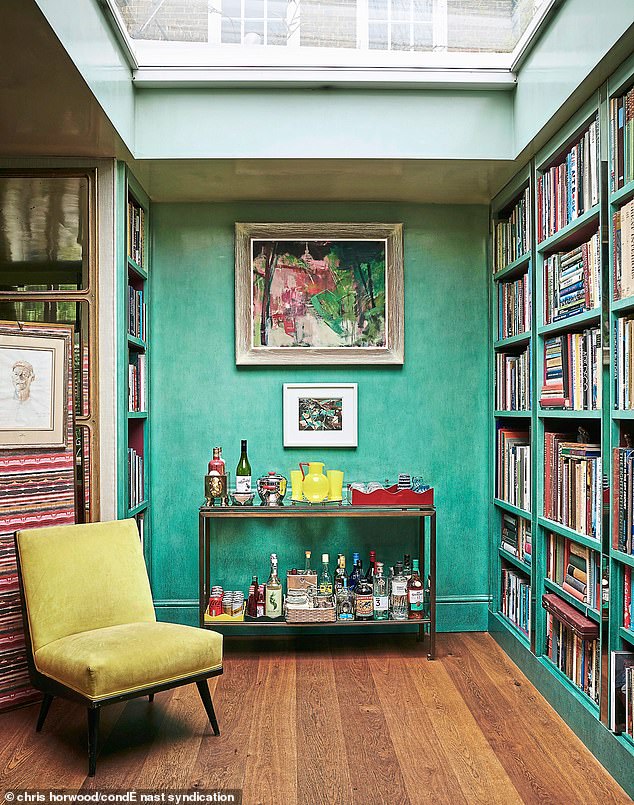By NINA CAMPBELL FOR YOU MAGAZINE
Published: 08:01 BST, 18 October 2025 | Updated: 08:01 BST, 18 October 2025
<!–
<!–
<!–
<!–
<!–
<!–
Have a drinks tray or trolley in the hallway. It instantly puts people at ease. When guests arrive, they often feel a bit awkward or on edge, but offering them a drink right in the hallway sends a welcoming message. Creating a space that feels inviting from the moment you step inside is a mark of good design.
Upgrade your ceiling. A stark white ceiling draws unwanted attention and makes a room feel smaller and unfinished. Adding a touch of colour up there, even something as subtle as cream instead of bright white, can make all the difference. A lacquered finish turns the ceiling into a focal point while also bouncing light around – perfect for rooms with lower ceilings.
Add a well-placed mirror. When I first moved into my Chelsea townhouse in 2005, the place was, frankly, hideous. But there was one saving grace: a long living room with a conservatory at the end, which had an old mirror on the wall that brought light all the way to the front of the room. It taught me to never underestimate the power of a well-placed mirror. I’ve since added them throughout the house. My favourites are the mirrored chimney breast in the living room and the mirror-fronted cabinet in the dining room. They add glints of light and make the rooms appear larger.

The statement wall and all-important drinks table in the entranceway of Nina’s Chelsea home
Keep woodwork in check. Doors, skirting boards and window frames can become dingy and discoloured over time, which lets down the overall design of a room. I make a point of repainting mine every few years – it brightens up the space instantly, making everything look cleaner, crisper, and more cared for, without the need to repaint the walls.
Know that ‘on trend’ cushions and accessories will date. Frills and scallops might feel exciting at the time, but they often end up looking tired or outdated by the next season. Remember those cushion tassel trims and squiggly placemats? Exactly. Luckily, these items usually cost relatively little to update compared to sofas or curtains, and so swapping them out every so often is an effective way to keep a room feeling fresh without a major overhaul.
Never skimp on upholstery. Always start a scheme with fabric that you genuinely love, even if it’s a little more expensive. Choosing a cheaper alternative might save money upfront, but you’ll never feel truly satisfied with the result. If you’re worried about committing to an expensive fabric, consider using it in smaller doses throughout the house – on cushions, a headboard or curtains. This way the fabric becomes a unifying thread throughout your space.
Make small spaces stand out with wallpaper. This is one of my favourite ways to add personality and depth to a compact area. Remember to choose a pattern you love, but keep the scale proportionate to the size of the room so it doesn’t dominate the space. Opt for designs that feel light and airy, rather than dense, heavy patterns.
Swap velvet for chenille. Love the look of velvet but lack the budget or lifestyle for it? Try chenille. It’s cheaper and not as delicate as velvet, so it stands up much better to everyday use. It doesn’t show creases either, which means your sofa or chairs will look better for longer. It also has an unusual cool-to-the-touch quality, making it comfortable in every season.
Shop on the high street and at vintage fairs. There are several designer collaborations on the high street this season that add a luxury finish without breaking the bank (I like Morris & Co x Zara Home, and Collagerie x John Lewis). The key is to always mix and match these pieces with a high-end vase or statement accessory. It’s the contrast between the high and low that really elevates a room. Antiques fairs and reclamation yards are also great places to look – you never know what you might find. Sometimes, a quirky old object can be transformed into an amazing lamp or side table.
For further inspiration, visit ninacampbell.com









